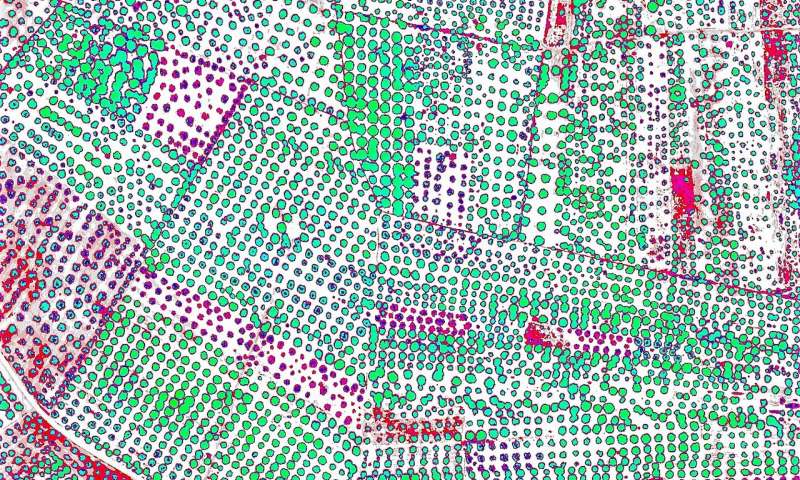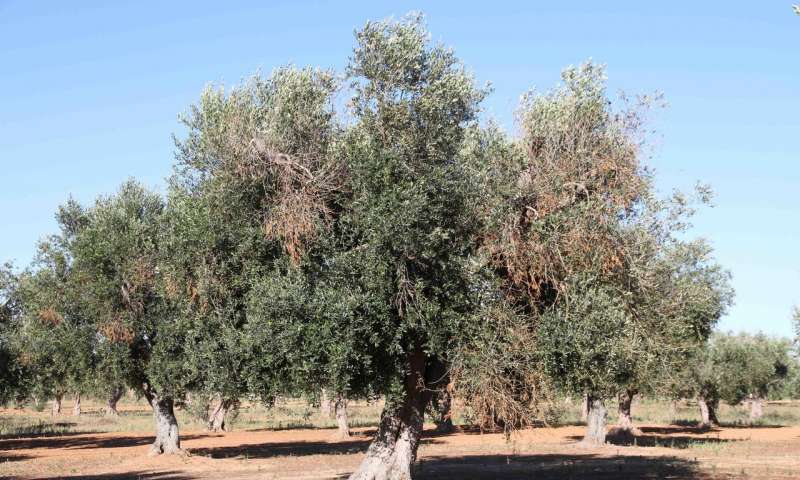
News
University Researchers Use Drones to Detect ‘Olive Tree Leprosy’
University Researchers Use Drones to Detect ‘Olive Tree Leprosy’
The bacterium Xylella fastidiosa has already devastated millions of crops as it passes through America. In Europe, where it has appeared recently, it has already caused losses among Mediterranean olive trees. A team of scientists, with Spanish collaboration, has developed a drone aerial analysis system to identify the pathogen before the visible symptoms of the disease appear.
Xylella fastidiosa is considered one of the most dangerous pathogens in the world for plants and has already caused diseases in more than 350 species, causing crop problems and economic losses. Recently the bacterium has reached more countries such as Iran and Taiwan, as well as the US and Brazil, where it was already present.
In Europe it was identified in 2013 in Italy, and it is spreading to the Mediterranean countries. Both France and Spain have suffered outbreaks. Now all eyes are focused on the largest area of olive cultivation in the world: more than 2.5 million hectares in the Mediterranean basin.
The devastating bacteria is transmitted by insects that feed on sap, which causes various diseases in plants. Olive trees are especially vulnerable: the bacteria withers the branches and burns the leaves. When there is no cure, until now the only solution to stop the progress of the pathology was to sacrifice infected trees.

An olive tree affected by Xylella fastidiosa, with visual symptoms of chlorosis and defoliation | Juan A. Navas-Cortes
A new study, published in the journal Nature Plants and which has had the collaboration of the Institute of Sustainable Agriculture of the CSIC in Córdoba, proposes an early diagnosis, key to a more effective containment. Researchers have been able to identify the bacteria before the symptoms in the infected olive trees are visible, thanks to a new remote image method that scans whole orchards from the air.
“Our study found that the effects of the bacterial infection can be remotely detected before any visible symptoms appear, allowing for rapid and accurate mapping of Xylella-infected olive trees across target orchards,” says Professor Peter North, from the Department of Geography at Swansea University.
“We conducted several intensive annual site inspections of more than 7,000 trees and collected data from airborne images on 15 olive trees. We found that the physiological alterations caused by infection by X. fastidiosa in the foreseeable stage were detectable in plant functional traits remotely evaluated by hyperspectral and thermal sensors,” say the authors in the paper.
Pablo Zarco-Tejada, first author of the study and scientist at Directorate D-Sustainable Resources of the European Commission, and his colleagues used special cameras, installed on board a small plane, to capture both hyperspectral images (looking through the entire electromagnetic range) as thermal image analysis of the orchards.
Then the authors checked the olive trees from the ground to detect Xylella infection. They discovered that the effects of the bacterial infection can be detected remotely before the visible symptoms appear, which allows a fast and accurate mapping of the olive trees infected with this bacterium in the different orchards.
Dr. Rocio Hernandez-Clemente, a geographer and member of the research team from Swansea University, added: “The spread of plant diseases is predicted to become an increasing problem with climate change, including for the UK. International cooperation is essential for early detection, to control damage and prevent spread. This study demonstrates the possibility of detection of symptoms at an early stage, and may be adapted to drones and aircraft for widespread use”.
The paper ‘Previsual symptoms of Xylella fastidiosa infection revealed in spectral plant-trait alterations’ is available on Nature Plants‘ website.


















